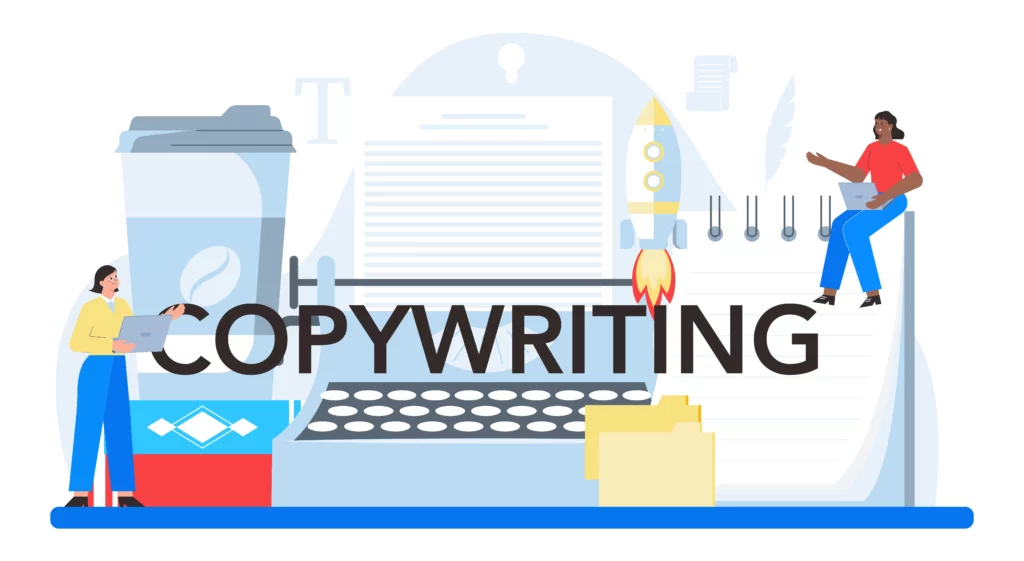Mastering the Art of Copywriting: 3 Proven Strategies to Elevate Your Copywriting Skills
Introduction
Copywriting is the backbone of modern digital marketing. Whether it’s crafting compelling ads, engaging website content, or persuasive emails, the role of copywriting is to deliver a message that not only informs but inspires action. As businesses increasingly depend on content to attract, engage, and convert customers, mastering the skill of copywriting is essential for anyone looking to excel in the world of digital marketing.
In this article, we’ll explore the intricacies of copywriting, including why it’s essential in today’s marketing landscape, strategies to sharpen your copywriting skills, and proven techniques used by expert copywriters to create content that captivates readers and drives results. You’ll also learn the key elements that contribute to impactful copy and how to improve your copywriting step by step.
Section 1: What is Copywriting and Why Does It Matter?
Before diving into the strategies, it’s important to understand the essence of copywriting.
1.1 What is Copywriting?
Copywriting is the practice of writing text with the purpose of persuading or influencing the audience to take a particular action. This action could range from purchasing a product, signing up for a newsletter, or engaging with a brand. Effective copywriting uses carefully selected language to communicate value, highlight benefits, and build trust.

1.2 Why is Copywriting Critical for Digital Marketing?
In digital marketing, copywriting is what turns web traffic into conversions. Whether you’re writing social media posts, email newsletters, landing pages, or product descriptions, copywriting is what persuades potential customers to take action. Strong copywriting establishes brand authority, creates a connection with the audience, and boosts overall marketing performance.


Section 2: Proven Strategies to Improve Your Copywriting Skills
Mastering copywriting takes time and practice, but with the right approach, anyone can improve their skills. Below are some essential strategies to hone your copywriting expertise.
2.1 Know Your Audience Inside and Out
Understanding your target audience is the cornerstone of successful copywriting. The more you know about who you’re writing for, the more relevant and persuasive your copy will be. Here are some steps to better understand your audience:
- Create Buyer Personas: A buyer persona is a semi-fictional representation of your ideal customer. When writing copy, imagine you’re speaking directly to this person. Include details like their demographics, interests, challenges, and pain points.
- Conduct Surveys and Interviews: If possible, get direct insights from your audience. Ask them what they care about, their biggest challenges, and what motivates them to make decisions.
- Analyze Competitors: Look at how your competitors are engaging their audience. This can offer valuable insights into what works and what doesn’t in your niche.
2.2 Write Captivating Headlines
The headline is arguably the most important part of any piece of copy. In today’s fast-paced digital environment, you only have a few seconds to capture the reader’s attention. Here’s how to craft compelling headlines:
- Be Clear and Direct: Your headline should clearly communicate the benefit of your content or offer. Avoid ambiguity or overly clever wording that may confuse the reader.
- Use Numbers and Data: Headlines with numbers tend to perform better. For example, “7 Proven Ways to Improve Your Copywriting” is likely to draw more clicks than “How to Improve Your Copywriting.”
- Invoke Curiosity: Pique the reader’s curiosity by making bold claims or promises, but make sure to back them up in the body of your content. Example: “How One Simple Copywriting Tweak Boosted Our Conversions by 50%.”
2.3 Master the Art of Persuasion
Persuasion is at the heart of all copywriting. To improve your persuasive skills, focus on these key elements:
- Appeal to Emotions: People often make decisions based on emotions rather than logic. Use emotional triggers such as fear, excitement, joy, or urgency to motivate action. Example: “Don’t miss out on the opportunity of a lifetime.”
- Benefit-Oriented Copy: Always emphasize the benefits of your product or service rather than the features. Highlight how your offering solves a problem or improves the reader’s life.
- Use Power Words: Certain words can trigger emotional responses or spark curiosity. Words like “exclusive,” “proven,” “guaranteed,” and “limited” can make your copy more persuasive.
2.4 Develop a Strong Call to Action (CTA)
A call to action is what turns a reader into a customer or subscriber. A great CTA is clear, concise, and compelling. Here’s how to create effective CTAs:
- Be Specific: Instead of using generic CTAs like “Click Here” or “Submit,” be specific about what action the reader should take and what they’ll get in return. For example, “Download Your Free Guide Now” or “Get Started with a 30-Day Free Trial.”
- Create a Sense of Urgency: Use time-sensitive language to encourage immediate action. Phrases like “limited time offer” or “while supplies last” can motivate readers to act quickly.
- Highlight the Benefits: Reinforce the value of taking action. For example, “Start Saving Today with Our Discount” or “Join 10,000+ Others in Our Exclusive Community.”


Section 3: Proven Techniques to Sharpen Your Copywriting
Now that you have a solid foundation, let’s dive deeper into actionable techniques to take your copywriting to the next level.
3.1 Practice Storytelling in Your Copywriting
Storytelling is a powerful tool in copywriting because it helps create an emotional connection with the audience. By sharing relatable stories, you can humanize your brand and make your message more engaging. Here’s how to incorporate storytelling:
- Use a Narrative Arc: Introduce a problem, build tension, and then offer a solution (which is your product or service). Example: “I struggled for years with ineffective marketing strategies until I discovered the power of copywriting.”
- Make it Personal: Share real stories or testimonials from satisfied customers. Case studies can be incredibly persuasive as they offer tangible proof of your product’s value.
- Keep It Relevant: The story you tell should be relevant to your audience’s needs and challenges. Don’t add unnecessary details that don’t contribute to the core message.


3.2 Test and Refine Your Copywriting
The best way to improve your copywriting is to test different approaches and learn from the results. A/B testing (split testing) allows you to compare two versions of copy to see which performs better. Here’s how to approach testing:
- Test Headlines: Try different headline variations to see which one gets more clicks or conversions. Example: “Boost Your Copywriting Skills Today” vs. “Master Copywriting with These Proven Tips.”
- Test CTAs: Experiment with different CTAs to determine which one leads to more conversions. Example: “Get Your Free E book Now” vs. “Download Your Copy Today.”
- Measure Key Metrics: Track important metrics like conversion rates, bounce rates, and click-through rates to gauge the effectiveness of your copy. Use tools like Google Analytics or email marketing platforms to monitor performance.
https://www.youtube.com/watch?v=jJQ6_YKvZ8M
3.3 Focus on Simplicity and Clarity
Simplicity is key in copywriting. Your message should be easy to read, understand, and act upon. Complex language or jargon can confuse readers and reduce the effectiveness of your copy. Follow these guidelines:
- Use Short Sentences and Paragraphs: Break up your content into digestible chunks. Short sentences and paragraphs make your copy easier to scan and keep readers engaged.
- Avoid Jargon: Unless you’re writing for a highly specialized audience, avoid technical terms or industry jargon that might confuse your readers.
- Write in a Conversational Tone: Imagine you’re talking to a friend when you write. Use everyday language and a friendly tone to build rapport with your audience.


Section 4: Continuous Improvement and Resources
Improving copywriting skills is a journey that requires consistent practice and learning. Here are some tips to continuously sharpen your skills:
4.1 Read and Analyze Great Copywriting
One of the best ways to improve is to learn from the masters. Study well-known copywriters, successful ad campaigns, and top-performing landing pages to see what makes them effective. Pay attention to their use of language, structure, and persuasion techniques.
4.2 Practice Copywriting Every Day
Like any skill, practice makes perfect. Make it a habit to write every day, even if it’s just short ad copy or social media posts. The more you write, the more confident and skilled you’ll become.
4.3 Seek Feedback and Edit Ruthlessly
Don’t be afraid to ask for feedback on your copy. Whether from colleagues, clients, or peers, constructive criticism can help you identify areas for improvement. Additionally, always revise and edit your copy to eliminate fluff and ensure clarity.
Conclusion
Copywriting is an essential skill in digital marketing that can significantly impact your brand’s success. By applying the strategies and techniques outlined in this article, you can continuously improve your copywriting skills and create content that captivates your audience and drives results. Remember, the key to mastering copywriting is practice, analysis, and a commitment to refining your craft over time.






